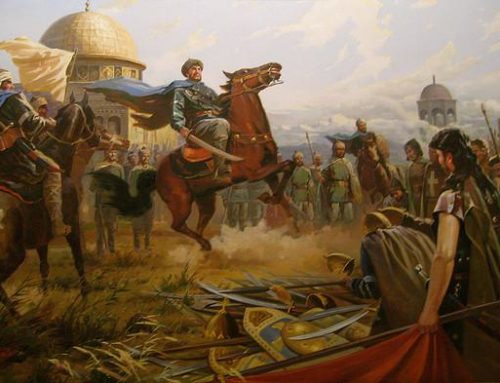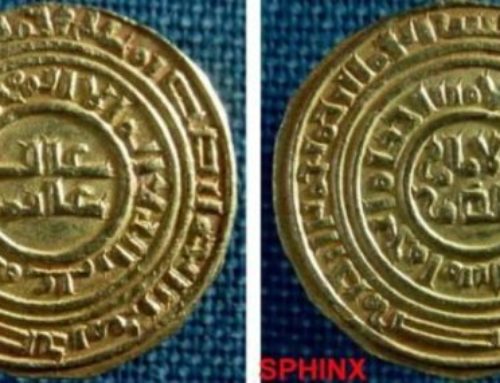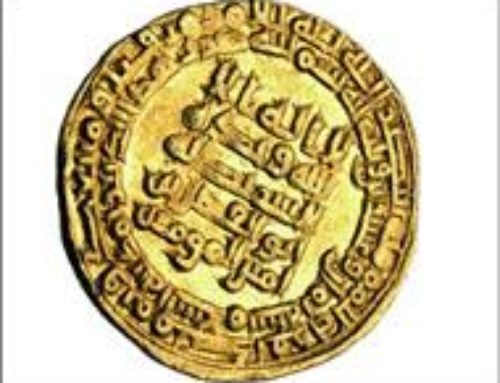
Seventy years after Antiochus Sidetes, King of Seleucids, besieged Jerusalem in 134 BC, Roman Commander Pompey succeeded in capturing the city in 63 BC,[1] and for seven centuries (63 BC-638 AD) Jerusalem was ruled by the Romans.[2]
Although Pompey destroyed the walls and many buildings in Jerusalem when he entered it,[3]the Romans otherwise led a civilized invasion of the city[4] and for two centuries the Romans granted Jerusalem, which was inhabited by Nabateans, Arabs, Jews, Egyptians and Phoenicians,[5] self-government and let its inhabitants rule themselves. However, after the Jewish which resulted in the expulsion of the Jewish population from the city and the official ban on Judaism and Jewish practices, Jerusalem became a Roman colony and was ruled by Roman officials.[6]
Under Roman rule, Jerusalem prospered commercially, politically and militarily.[7] Rome built temples, palaces, streets, bridges and dams in Jerusalem. It also minted coins, planted trees and fostered industry and business. Most of the monuments erected under Roman rule were destroyed either during the two Jewish revolts which emerged due to the Roman policies against the Jewish religious traditions or upon the Persian invasion.[8]
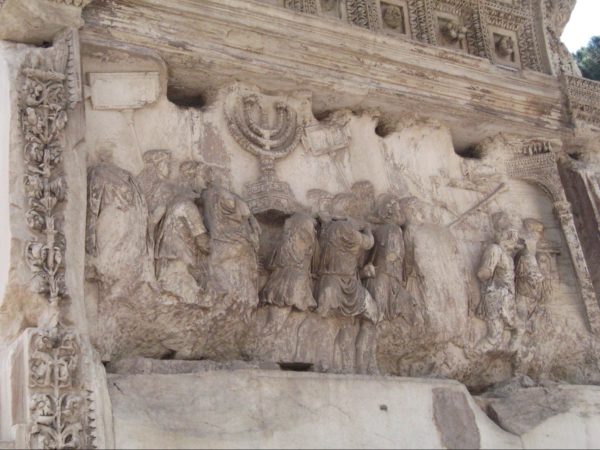
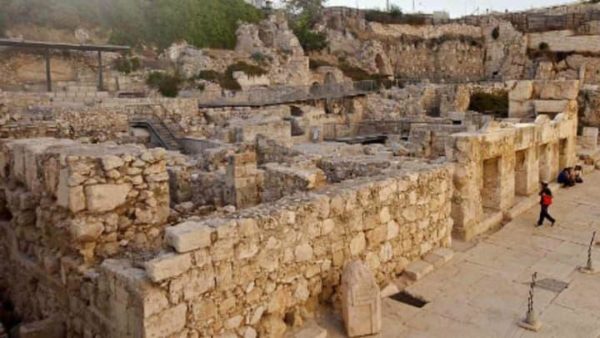
Herod the Great
In 40 BC, Herod, the son of Caesar,[10] became king of Judea (Palestine) then a Roman colony.[11] Prior to that, Herod used to be the governor of Galilee. [12] Judea remained under his rule from 37 BC-4 BC.[13]
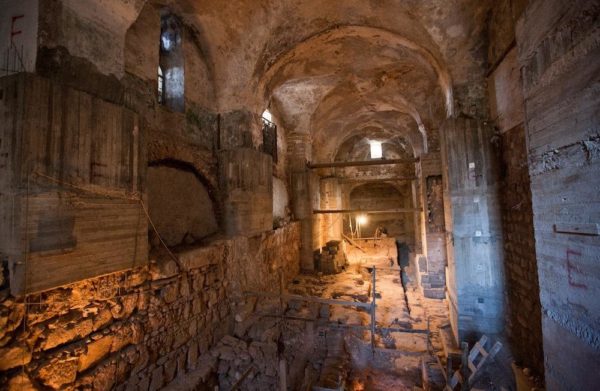
Jewish rebellions against the Romans
The Jewish inhabitants of Jerusalem revolted against Rome twice: in 66-70 AD, and in 132-135 AD under the leadership of Bar Kochba.[20]
In 66 AD, , seeking political and social independence from the Empire of Rome, the Jews of Jerusalem revolted against the Romans [21] In 70 AD, the Roman commander Titus led the fight against them.[22] He surrounded the city, destroyed its walls, buildings and markets, killed many Jews, destroyed their temple[23] and restored the city to the Roman rule again.[24]
The second revolt, occurred in 135 when the Jews under the leadership of Bar Kochba[25] revolted against the Roman Emperor Hadrian who had destroyed the city and turned it into a center for idols worship.[26] After the second revolt, Jews were either killed, sold into slavery, or exiled to the far corners of the Roman Empire,[27] and were prohibited from entering the city by law.[28]
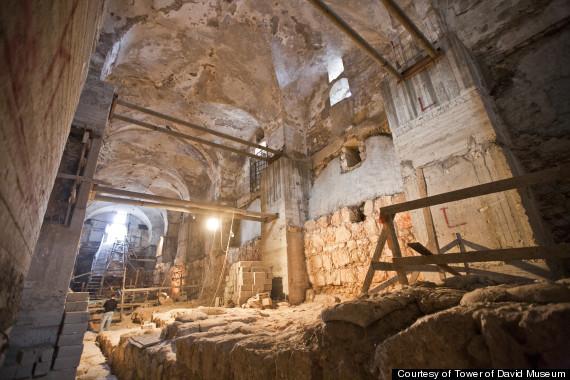
[1] Henry Cattan, Jerusalem (London: Saqi Books, 2000), 24 and Karen Armstrong, Jerusalem: One City, Three Faiths (New York: Ballantine Books, 2005), 124 and Habib Ghanem, Jerusalem: a History and a Cause (Lebanon: Dar Al-Manhel, 2002), 28 and Riad Yassin and Amjad Al-Fa’ouri, the Political and Cultural History of Jerusalem (Jordan: Dar Wael, 2012), 19 and Aref Al-Aref, History of Jerusalem (Jerusalem: Al Andalus Library, 1999 fifth edition), 40
[2] John Wilkinson, “Jerusalem under Rome and Byzantium”, Jerusalem in History (2000): 75
[3] Armstrong, One City, Three Faiths, 125
[4] Al-Aref, History of Jerusalem, 68
[5] Wilkinson, Jerusalem under Rome”, 76
[6] Wilkinson, “Jerusalem under Rome”, 75
[7] Al-Aref, History of Jerusalem, 69
[8] Al-Aref, History of Jerusalem, 69-70
[9] Wilkinson, “Jerusalem under Rome”, 75
[10] Teddy Kollek and Moshe Pearlman, Jerusalem: a History of Forty Centuries (New York: Random House, 1968), 95
[11] Cattan, Jerusalem, 24
[12] Kollek and Pearlman, a History of Forty Centuries, 96-97
[13] Kollek and Pearlman, a History of Forty Centuries, 97 and Armstrong, One City, Three Faiths, 126-127 and Ghanem, Jerusalem, 28 and Al-Aref, History of Jerusalem, 41
[14] Al-Aref, History of Jerusalem, 42
[15] Wilkinson, “Jerusalem under Rome”, 78
[16] Kollek and Pearlman, a History of Forty Centuries, 98 and Armstrong, One City, Three Faiths, 128
[17] Kollek and Pearlman, a History of Forty Centuries, 98
[18] The first Temple believed to be built by Solomon, was destructed by the Babylonian King Nebuchadnezzar II after the Siege of Jerusalem of 587 BC
[19] Cattan, Jerusalem, 24 and Joseph Millis, Jerusalem: the Illustrated History of the Holy City (London: Andre Deutsch, 2012), 28 and Wilkinson, “Jerusalem under Rome”, 78 and Armstrong, One City, Three Faiths, 130
[20] Cattan, Jerusalem, 24
[21] Kollek and Pearlman, a History of Forty Centuries, 125, 128
[22] Wilkinson, “Jerusalem under Rome”, 86 and Armstrong, One City, Three Faiths, 151 and Ghanem, Jerusalem, 28 and Yaseen and Fa’ouri, the Political and Cultural History, 19 and Al-Aref, History of Jerusalem, 64
[23]Kollek and Pearlman, a History of Forty Centuries, 135
[24] Millis, Jerusalem, 29
[25] Kollek and Pearlman, a History of Forty Centuries, 137
[26] Wilkinson, “Jerusalem under Rome”, 80
[27] Cattan, Jerusalem, 24
[28] Wilkinson, “Jerusalem under Rome”, 88


